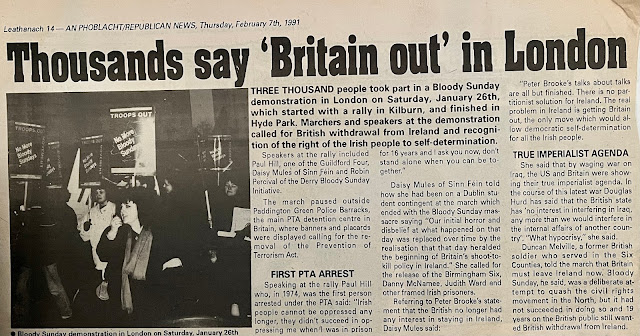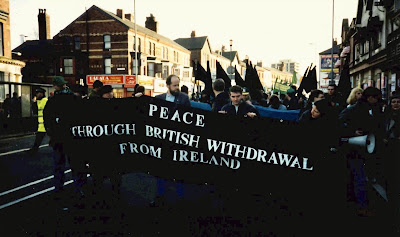Today is Hiroshima Day - on August 6th 1945, the first nuclear weapon was dropped on Japan, killing perhaps 70,000 people in an instant, and up to 250,000 people in total (many from radiation for years afterwards). Three days later, on Auugst 9th, Nagasaki suffered a similar fate.
The prospect of nuclear destruction cast a heavy shadow over the post-war period, prompting major movements against nuclear weapons in the late 1950s/early 60s and again in the early 1980s. E.P. Thompson, a key strategist of 1980s CND (Campaign for Nuclear Disarmament), wrote seriously of 'Exterminism, The Last Stage of Civilisation' in New Left Review (no. 121, May-June 1980):
'The Bomb is, after all, something more than an inert Thing. F
irst, it is, in its destructive
yield and its programmed trajectory, a thing of menace. Second, it is a component in a weapons-
system, and producing, manning and supporting
that system is a correspondent social system - a distinct organisation of labour, research and operation, with distinctive hierarchies of command, rules of secrecy, prior access to resources and skills, and high levels of policing and discipline: a distinctive organisation of production,
which, while militarist in character, employs, and is supported by great numbers of civilians (civil servants, scientists, academics) who are subordinated to its discipline and rules...
I am offering, in full seriousness, the category of '
exterminism'. By '
exterminism' I do not indicate an intention or criminal foresight in the prime
actors. And I certainly do not claim to have discovered a new '
exterminist' mode of production.
Exterminism designates these characteristics of a society - expressed, in differing degrees, within its economy, its polity and its ideology - which thrust it in a direction whose outcome must be the extermination of multitudes. The outcome will be extermination, but this will not happen accidentally (even if the final trigger is 'accidental') but as the direct consequence of prior acts of policy, of the accumulation and perfection of the means of extermination, and of the structuring of whole societies so that these are directed towards that end'
In music the fear of nuclear apocalypse was widely expressed - Tom Lehrer's
We will all go together when we go, UB40's
The Earth Dies Screaming, Peter Tosh's
No Nuclear War,
Hiroshima Nagasaki, Russian Roulette by Moving Hearts and many more.
Still nothing can beat Crass's Nagasaki Nightmare
They're always there high in the skies...
Nagasaki nightmare, Nagasaki nightmare
Pretty as a picture in the generals' eyes
Nagasaki nightmare, Nagasaki nightmare
They've done it once, they'll do it again
They'll shower us all in their deadly rain
Post-Cold War the prospect of an all encompassing global nuclear war leading to mutually assured destruction and the end of life on earth does seem more remote. But the continuing existence of nuclear weapons - and indeed their proliferation - means that there is a continuing possibility of some city, somewhere, sometime, suffering a similar fate to Hiroshima and Nagasaki.
































